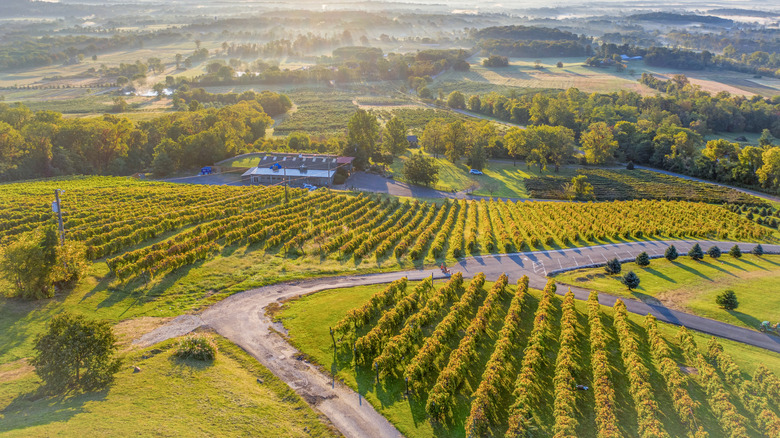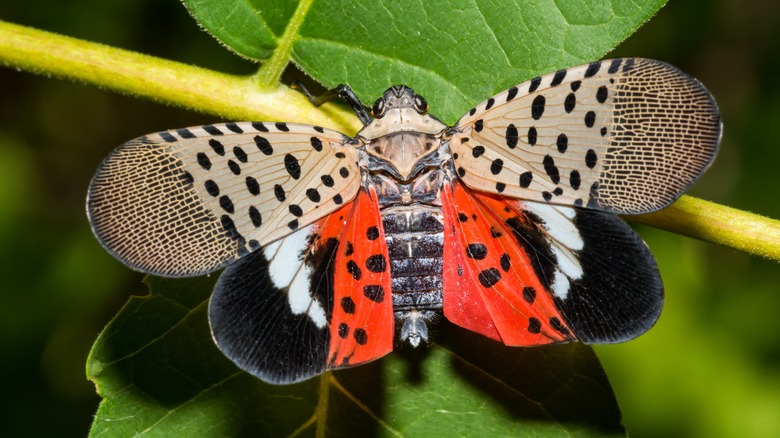The Invasive Pest Putting US Wine Production In Danger
It is safe to say that if something is a serious threat to wine production anywhere, people are going to be up in arms about it. Few things in the world of food and drink inspire such passionate devotion, with even things as basic as boxed wine subject to dissection and evaluation. Unfortunately, wine is greatly affected by small changes in geography and climate and thus subject to all sorts of threats from higher temperatures to reduced water supplies. One of the worst things that can happen to grapes, or any major crop, is the introduction of an invasive pest.
Various invasive species have threatened wine supplies before, as a species of louse nearly destroyed the French wine industry in the late 19th century (via Wine Enthusiast). Named Phylloxera, it was accidentally brought over to Europe from America by botanists. For over 20 years, it feasted on both the roots and leaves of grape vines until French wine production dropped almost 50%. It was only after grafting the roots of American grapes, which had a natural resistance to the bug, onto the French varieties saved historic wine regions like Beaujolais from complete destruction. Now the script has flipped and it's American vineyards that are dealing with a destructive invasive pest.
The spotted lanternfly is wreaking havoc on American grapes
The spotted lanternfly just entered the scene back in 2014, coming over to the U.S. from Asia (via CNBC). Since then, it has spread to 14 states, and unfortunately for wine lovers, it has a taste for grape vines, sucking the nutrients out and leaving rows of dead plants in its wake. According to Wired, some vineyards in the first state affected by the lanternfly, Pennsylvania, lost up to 90% of their crop. Although it greatly prefers grapes, the lanternfly consumes 70 native species of plant, including fruit trees like apple and cherry, making it extremely difficult to track and contain.
So far, the lanternfly has only spread in the eastern and midwestern United States, but it has been expanding rapidly and has winemakers in California nervous. Researchers at North Carolina State University modeled the bug's expansion and estimated it could reach the nation's number one wine state as early as 2027, with both California and Washington's climate considered good for the lanternfly. Luckily, there are steps you can take to help combat the invasive lanternfly if you live in an affected region. Taste of Home notes you can kill lanternflies with a spray bottle of white vinegar, which won't harm most plants. If you find collections of eggs, you can scrape them into a plastic bag with rubbing alcohol. Not the most fun activities, but for the future of the American wine industry, this a battle worth fighting.

